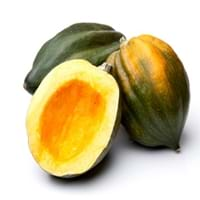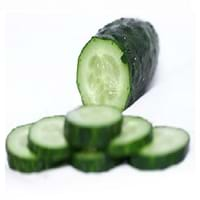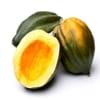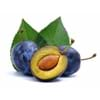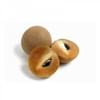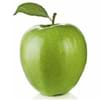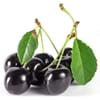Health Benefits
Anti-inflammatory properties, Arthritis treatment, Regulates Blood Sugar
Arthritis treatment, Cancer prevention, Eczema treatment, Increases metabolic rate, Kidney stone treatment, Prevents constipation, Removes toxic metals, Treatment of alzheimer's disease
General Benefits
Boosts immune system, Controls blood sugar levels, Digestive aid
Anti oxidant properties, Anti-inflammatory properties, Controls blood pressure, Digestive aid, Strengthens bones, Treatment of sore eyes
Skin Benefits
Nourishes skin, Protects skin from oxidative stress
Heals sunburn, Hydrates skin, Skin rejuvenation, Skin revitalization, Treatment of dark spots, Treatment of skin diseases
Hair Benefits
Prevents hair loss, Promotes longer and healthier hair, Regulates hair growth
Promotes longer and healthier hair, Protects hair, Regulates hair growth, Shiny hair
Allergy Symptoms
Asthma, Red rash, Swelling of mouth, tongue or lips
Breathing difficulty, Decrease in blood pressure, Diarrhea, Itching, Red rash, Runny nose, Sneezing, Vomiting, Watery eyes
Side Effects
Diarrhoea, Vomiting
Stressed heart, Irritation, Swelling, Swelling around mouth, Throat swelling, Tongue swelling, Strained blood vessels
Lactating Women
Yes
Not Available
Best Time to Eat
Along with meal, As a snack in the late afternoon, Don't eat after meal, Eat the fresh ones, avoid mixing with any other foods, don't eat after meal.
Along with meal, As a snack in the late afternoon, Eat the fresh ones, avoid mixing with any other foods, don't eat after meal., Strictly avoid empty stomach
Vitamin B5 (Pantothenic Acid)
Vitamin C (Ascorbic Acid)
Vitamin E (Tocopherole)
Not Available
Vitamin K (Phyllochinone)
Not Available
Lutein+Zeaxanthin
Not Available
Phytosterol
Not Available
Calories in Fresh Fruit with Peel
Calories in Fresh Fruit without Peel
Not Available
Calories in Frozen Form
Not Available
Calories in Dried Form
Not Available
Calories in Canned Form
Not Available
Calories in Juice
Not Available
Calories in Jam
Not Available
Calories in Pie
Not Available
Type
Berry
Fruit vegetable, Melon
Season
Winter
Spring, Summer
Varieties
Bush Table Queen, Heirloom Table Queen, Festival Hybrid, Early Acorn Hybrid, Table Ace, Ebony and Cream of the Crop
Armenian, English, Garden, Kirby, Lemon and Persian
Color
Dark green, Green-yellow, Orange green
Dark green, Green
Inside Color
Yellow
White
Taste
Sweetish
Juicy, Watery
Origin
Central America, North America, Unknown
India
Soil Type
Well-drained
Loam
Climatic Conditions
Cold, Sunny
Warm
Facts about
- It was named as Acorn Squash for its resemblance to a large ribbed acorn.
- It is said that squash was being grown in Mexico as long as 10,000 years ago.
- It was the first food cultivated by native American Indians.
- Outer waxy coating of cucumber can erase the pen writing.
- Pressing cucumber on roof of mouth for 30 sec will eliminate bad breath.
- It is made up of 96% water.
- English cucumber can grow longer than 2 feet.
Other Countries
Egypt, India, Iran, Italy, Mexico, Russia, Turkey, Ukraine, United States of America
Egypt, Indonesia, Iran, Japan, Russia, Spain, Turkey, Ukraine, United States of America
Top Importer
Costa Rica
France
Top Exporter
United States of America
Spain
Botanical Name
Cucurbita Pepo
Cucumis sativus
Synonym
Winter Squash
Not Available
Subkingdom
Tracheobionta
Tracheobionta
Division
Magnoliophyta
Magnoliophyta
Class
Magnoliopsida
Magnoliopsida
Subclass
Dillenhidae
Dillenhidae
Order
Cucurbitales
Cucurbitales
Family
Cucurbitaceae
Cucurbitaceae
Generic Group
Not Available
Not Available
Difference Between Acorn squash and Cucumber
We might think that Acorn squash and Cucumber are similar with respect to nutritional value and health benefits. But the nutrient content of both fruits is different. Acorn squash and Cucumber Facts such as their taste, shape, color, and size are also distinct. The difference between Acorn squash and Cucumber is explained here.
The amount of calories in 100 gm of fresh Acorn squash and Cucumber with peel is 40.00 kcal and 15.00 kcal and the amount of calories without peel is Not Available and 12.00 kcal respectively. Thus, Acorn squash and Cucumber belong to Low Calorie Fruits and Low Calorie Fruits category.These fruits might or might not differ with respect to their scientific classification. The order of Acorn squash and Cucumber is Cucurbitales and Cucurbitales respectively. Acorn squash belongs to Cucurbitaceae family and Cucumber belongs to Cucurbitaceae family. Acorn squash belongs to Cucurbita genus of Pepo species and Cucumber belongs to Cucumis genus of C. sativus species. Beings plants, both fruits belong to Plantae Kingdom.
